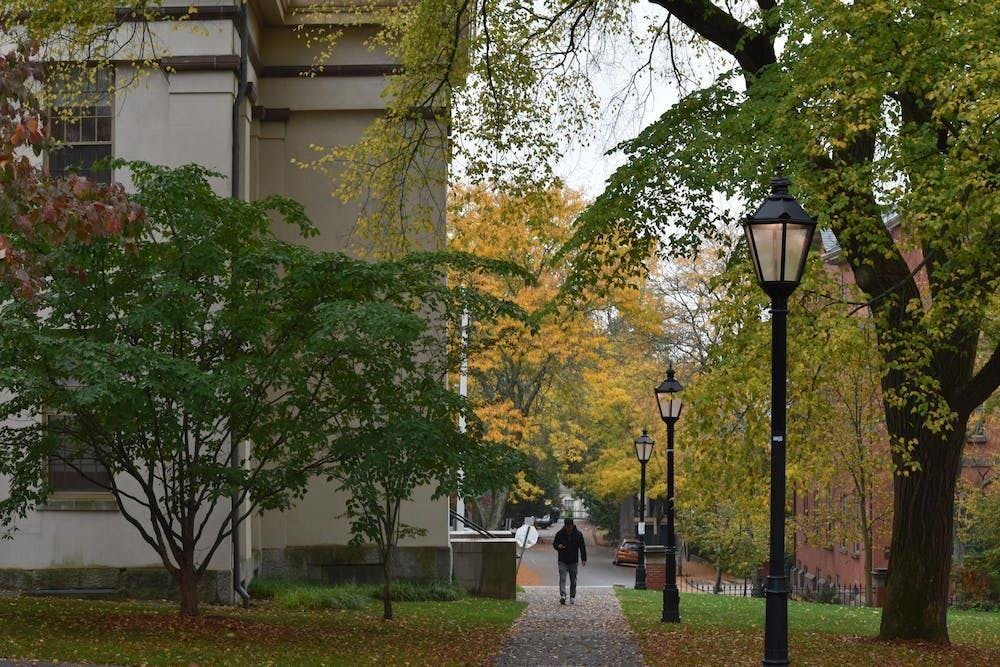Brown University admitted 1,623 regular decision applicants to the class of 2028. Its overall acceptance rate for this cycle is 5.2%, the third-lowest in Brown’s history.
This cohort is the first to be admitted since the Supreme Court severely restricted race-conscious admissions practices at universities nationwide. These students join 898 others admitted during early decision in December, bringing the total number of admitted students this year to 2,521.
Acceptance rates for Brown’s dual degree programs both saw among their largest applicant pools. The dual undergraduate-medical Program in Liberal Medical Education, or PLME, accepted just 76 of 4,251 applicants, and the Brown-RISD Dual Degree program accepted 20 of its 953 applicants.
“Once again, we were humbled by the breadth of perspective and depth of talent in the applicant pool,” Powell wrote in an email to The Herald. “Though there were necessary changes to some aspects of the admission process, we remained focused on our core values and mission — identifying students from a broad range of experiences with demonstrated academic excellence and the potential to make extraordinary contributions to the Brown community.”
The Herald received a breakdown of the admitted applicants by geography, first-generation status, type of high school and more.
Explore all the data on The Herald’s interactive dashboard.
This academic year, the University received 48,881 applications, its third-largest applicant pool ever. This marks a 5% decrease since last year, a dip that Powell previously told The Herald was “planned for and expected.”
With a smaller applicant pool, the University saw slightly higher acceptance rates than in previous years. For the class of 2028, 3.8% of regular decision applicants were admitted.
The University admitted approximately two-thirds of the prospective class of 2028 via regular decision and one-third via early decision.
The class of 2028 is the last class applying under a test-optional policy, which will end starting this summer. Powell declined to provide the test score ranges for admitted students.
16% of admitted students are first-generation, or the first in their family to attend college, a 2% decrease from the previous year.
The University also admitted a roughly equal number of students who were assigned male and female at birth — a methodology in keeping with federal reporting requirements. The gender of applicants is recorded as a free response field, making students’ responses harder to quantify, Powell noted.
The number of admitted rural students increased, with students from rural areas and small towns making up 9% percent of admitted applicants. This is a slight increase from last year, when only 8% of admitted students were identified as rural students.
The admitted students varied in their educational background with 58.1% coming from public high schools, 32.4% coming from private schools and 9.4% from parochial schools. These numbers have seen little variation over the past decade.
The top five intended concentrations for the class of 2028 are economics, computer science, engineering, biology and political science.
The admitted cohort also hails from around the globe with 96 different countries represented in the group. The top five are China, Canada, India, the United Kingdom and South Korea.
Domestically, students from all 50 states and the District of Columbia, Guam, Puerto Rico and the U.S. Virgin Islands were part of the accepted cohort. The top states represented in the class of 2028 are California, New York, Massachusetts, Texas, New Jersey, Florida, Connecticut, Pennsylvania, Maryland and Georgia.
Additionally, 65% of admitted applicants indicated an intention to apply for financial aid, a slight decrease from the 68% of the class of 2027 who did so.
With a tumultuous rollout of the new Free Application for Federal Student Aid, the University has communicated to students that aid eligibility may be determined via the CSS Profile and federal tax returns, according to Powell. But when the University does receive a student’s FAFSA, “the components of the aid offer may change, but the total grant and scholarship funding will remain the same.”
Admitted students will head to College Hill for the Office of Admission’s annual admitted students day — A Day on College Hill — on April 12 and 19.
The University will also continue to review student veteran applications on a rolling basis which is expected to conclude in April. The population of student veterans on campus has doubled since 2019.
Regular decision accepted applicants have until May 1 to accept their offer of admission while early decision applicants are contractually obligated to join the class of 2028. Nearly two-thirds of accepted students joined the class of 2027 on campus last fall.

Owen Dahlkamp is the managing editor of newsroom on The Herald's 135th Editorial Board, overseeing the paper's news operations. Hailing from San Diego, CA, he is concentrating in Political Science and Cognitive Neuroscience with an interest in data analytics. In his free time, you can find him making spreadsheets at Coffee Exchange.

Talia LeVine is a section editor covering arts and culture. They study Political Science and Visual Art with a focus on photography. In their free time, they can be found drinking copious amounts of coffee.





